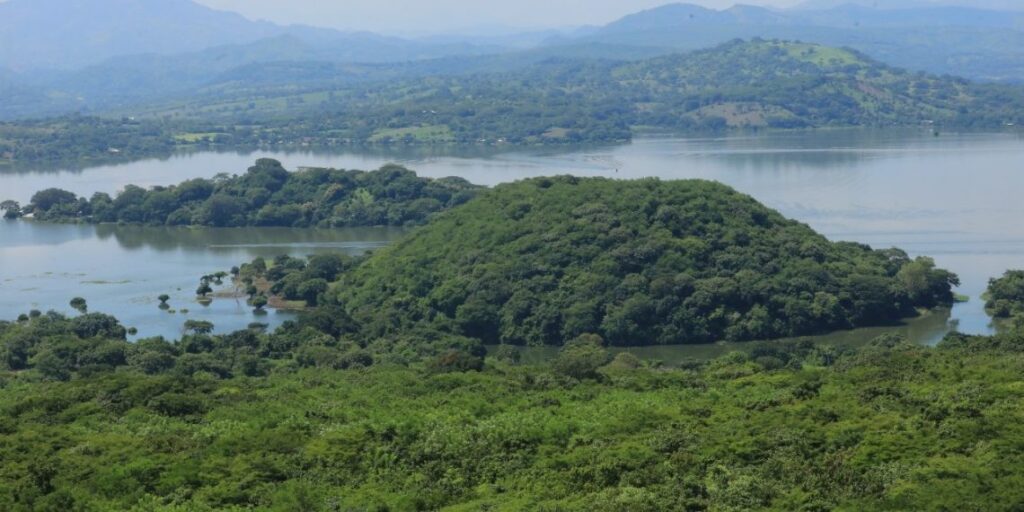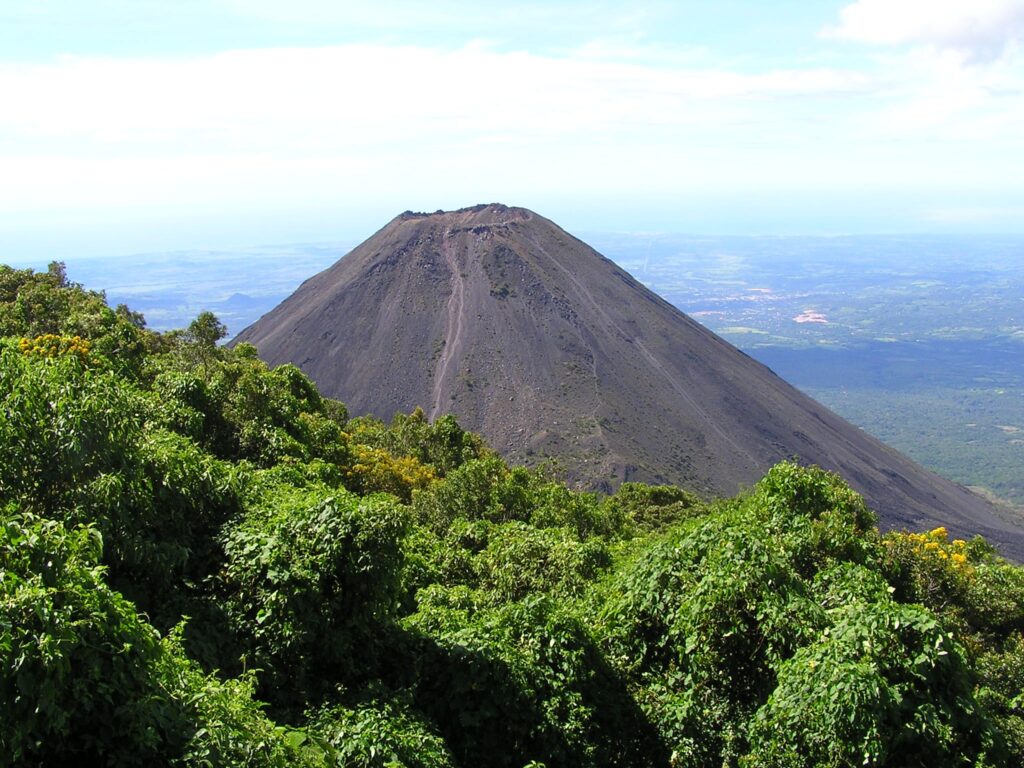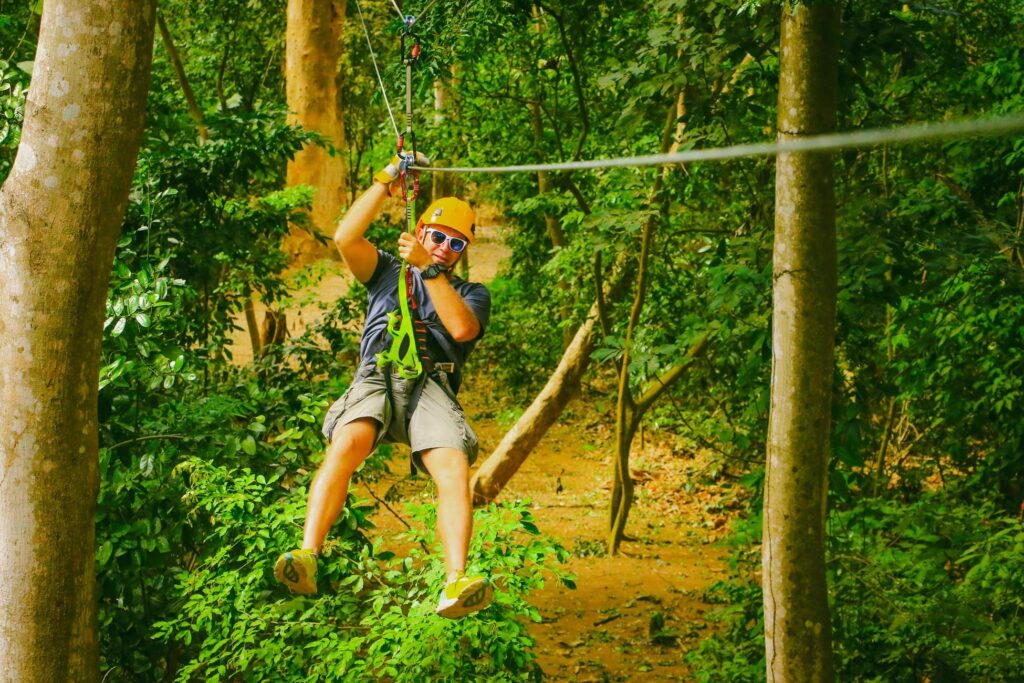
El Salvador has several national parks and protected areas where visitors can connect to nature through hiking, treated by impressive views and discovering a wide array of colorful fauna and flora. These sites are of great importance, not just because of their beauty, but also because these ecosystems are of great scientific and/or historical value and are the habitat for a variety of animal and plant species.
The national parks are important for tourism in El Salvador, and allows visitors to explore volcanoes, forests, lagoons, rivers and wildlife, contributing to the local and regional economy as well as conservation.
For those of you who love outdoor walks and scenic landscapes, El Salvador has plenty to offer to enjoy during your stay. There are five national parks in El Salvador and several protected areas.
– El Boqueron National Park (San Salvador Volcano Crater National Park)
– San Diego and San Felipe Las Barras National Park
– El Impossible National Park
– Montecristo National Park- Los Volcanes National Park (Cerro Verde National Park)
– Walter Tilo Deininger Park
1. El Boqueron National Park

El Boquerón Natural is a natural park in El Salvador, located at the top of the San Salvador volcano, 1,800 meters above sea level, in a volcanic mountain range. A hike to the summit offers a great view of the volcanic crater which is 1.5 kilometers in diameter and 558 meters deep, which was created after a strong eruption in 1917. El Boquerón has a cool temperate climate throughout the year. The park is home to many plant species, such as hydrangeas, wild sultanas and begonias, among others. We can find several animal species such as armadillos, raccoons, deer, foxes and others. Let us know if you are interested in booking a tour to El Boqueron National Park with our local agency from San Salvador.
2. San Diego and San Felipe Las Barras National Park

If you like vast natural landscapes you will enjoy a walk through San Diego and San Felipe de las Barras as the park has impressive natural sites that any traveler will love. This park has an extensive territory of around 1,700 hectares with a vast reservoir of ecosystems with different types of fauna and flora. We have the homonymous forest San Diego and San Felipe de las Barras and also two bodies of water on each side of the forest: Lago Güija and Laguna de Metapán.
It is one of the best stretches of protected dry forest in all of El Salvador and thanks to the dry lava of the volcanoes, vegetation does well here. There are many animal species here such as cormorants, pichiches, blue-winged teals, white egrets, fish eagles, snail hawks and more. The best way to explore San Diego and San Felipe Las Barras is to book a guided tour as you cannot go everywhere unescorted. This is a good way to get the most out of your trip and to spot wildlife. If you book a private tour you will be able to go parts which are not available to the general public. As there are few tourists, you might even be the sole visitor.
Our local agency offers guided tours to San Diego and San Felipe Las Barras National Park, starting from San Salvador.
3. El Imposible National Park

El Imposible National Park is a national park in El Salvador which gained its status in 1989. The park is 5,000 hectares big and has an altitude of between 250 and 1,425 meters The park is a safe haven for many endangered species such as the white hawk, the mountain guan, margays and the king vulture. There are also many oak trees in the park. The park harbors over 500 species of plants, 100 species of mammals, 53 amphibians and reptiles, 285 birds as well as at least 5,000 kinds of butterflies. As it is a large area, it is one of the most important natural lungs of El Salvador and provides a safe home for many animal species that would otherwise be in danger of extinction. Its existence also helps regulate local climate and with the production of water for the local area. If you enjoy ecotourism, this space will be a paradise for you. After all, you will have the chance to enjoy two different climates (hot and temperate) along with the flora and fauna that characterizes each one.
4. Montecristo National Park

The Montecristo National Park is located 5 km northeast of the city of Metapán and has a surface of 1973 hectares of cloud forest. Montecristo National Park is part of the 221 km² Trifinio Biosphere Reserve, which extends between El Salvador, Guatemala and Honduras and was created to protect the cloud forest of the Montecristo massif and its flora and fauna. The Montecristo cloud forest harbours tall oak and laurel trees and is home to rare species such as the pygmy anteater, long-eared owl, toucans, Central American agouti, pumas and spider monkeys.
The protection of the region is a joint initiative of these three countries, which resulted in the creation of the Montecristo Trifinio National Park in Honduras and the Montecristo National Park in El Salvador, as well as the Trifinio biosphere reserve in Guatemala.
The Montecristo National Park contains trees up to 30 meters tall, including cypresses, oaks, and pines; and during a visit you might see animals such as the black shrew, squirrel, porcupine and white-tailed deer. There are also about 275 endemic bird species. The park has areas designated for tourism, such as trails and camping areas. Visiting the Montecristo National Park is regulated and has to be done through a tour agency.
Most vegetation that can be seen in Montecristo today is the result of an extensive process of ecosystem restoration carried out in the country. Montecristo is also home to more than a hundred families that participate in initiatives for the protection and conservation of wildlife.
5. Los Volcanes National Park (Cerro Verde National Park)

The park is called Los Volcanes National park as it houses three volcanoes. The park has a fresh climate with temperatures which can range anywhere between a few degrees to 24 degrees Celsius or warmer. We can find the Santa Ana Volcano, Izalco Volcano and Cerro Verde. The park is an important biological corridor together with El Imposible National Park creating a “bridge” for wildlife to cross from one park to another, through 40 kilometers of shaded coffee plantations and highland rainforests. This is why the area is of high priority for conservation. The park covers 4,500 hectares, between state, municipal and private lands and at its highest peak is 2,381 meters above sea level.
6. Walter Tilo Deininger Park

Walther Thina Park has a very distinctive character compared to other parks. It is a lush green space in the middle of a dry, arid area. The park is home to almost 150 kinds of trees and a wide variety of other plants and flowers. The park has a high humidity with trees growing as high as twenty meters. There are five different streams which transport water during the rainy season but only the Chan Lady Creek and the Amayo River are full with water throughout the year. We can find all kinds of animals such as deer, garrobos, cotuzas, pezotes, zontos, parrots, owls, boas, chachalacas and more. Inside the park is a 15 meter long cave, where we can find bats, but also small mammals like cotuza and pezote.







